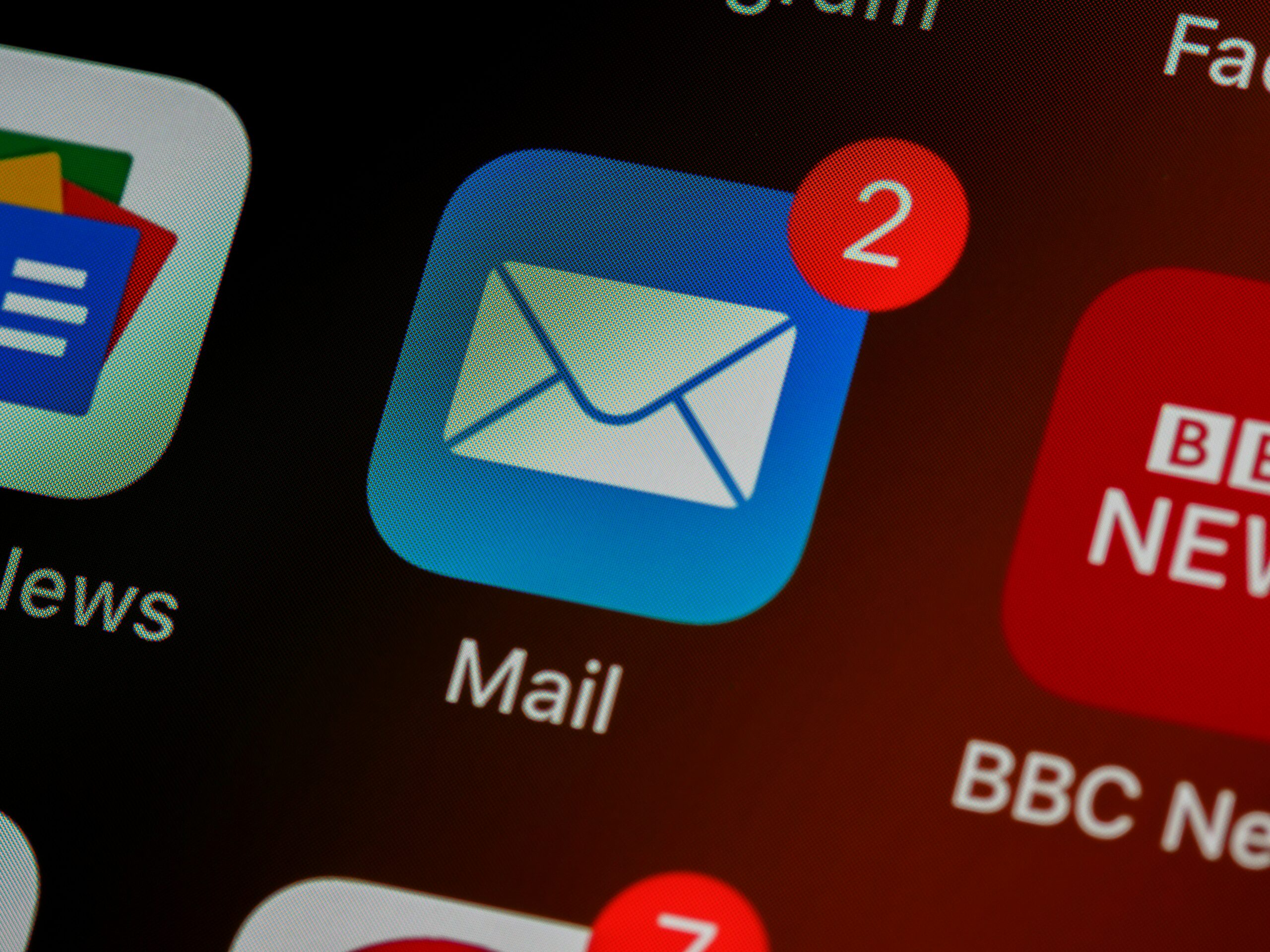Are you struggling to map your customer journey effectively and engage your audience? Automated email campaigns can revolutionize your approach. This article explores how these campaigns enhance customer journey mapping by delivering personalized content that drives engagement and loyalty. By the end, you’ll understand how to use automated emails to transform your customer journey mapping and boost your marketing results.
Key Takeaways
- Automated email campaigns enhance customer journey mapping by delivering personalized content at key touchpoints
- Effective journey maps incorporate customer feedback, social media interactions, and website analytics for comprehensive insights
- Personalization drives engagement in automated emails by addressing specific pain points and delivering relevant value propositions
- AI is transforming email automation, enabling more sophisticated content personalization and predictive analytics for customer behavior
- Measuring campaign success through KPIs and engagement metrics is crucial for optimizing customer journey strategies
Understanding Customer Journey Mapping

Customer journey mapping visualizes the stages customers go through when interacting with a brand. This process involves defining key touchpoints, understanding customer feedback, and utilizing software tools. Effective journey maps incorporate social media interactions and website analytics, often integrated with WordPress for seamless management. Businesses can identify opportunities to enhance experiences and drive engagement through targeted email campaigns by mapping customer journeys.
Defining Customer Journey Stages
Defining customer journey stages involves identifying key touchpoints where customers interact with a brand, from initial awareness to post-purchase support. These stages typically include awareness, consideration, decision, and retention. By understanding each stage, businesses can tailor their email automation strategies to address specific customer needs, improve customer satisfaction, and enhance customer service. Effective journey mapping allows companies to create targeted advertising and personalized communications that resonate with customers at every step of their journey:
| Journey Stage | Customer Action | Email Automation Strategy |
|---|---|---|
| Awareness | Discovers brand | Welcome series |
| Consideration | Evaluates options | Educational content |
| Decision | Makes purchase | Confirmation emails |
| Retention | Ongoing engagement | Loyalty programs |
Importance of Mapping Customer Journeys
Mapping customer journeys is crucial for effective email marketing automation and lead generation. By understanding the customer’s path, businesses can create targeted email campaigns with compelling calls to action at each stage. This strategic approach enhances a company’s reputation, increases engagement, and optimizes the collection of valuable email addresses for future marketing efforts.
Key Components of an Effective Journey Map
Effective journey maps incorporate key components that drive successful email nurturing strategies. These elements include customer touchpoints, such as shopping cart interactions and birthday notifications, which can be leveraged through platforms like Mailchimp. By integrating these components into a comprehensive marketing strategy, businesses can create personalized email campaigns that resonate with customers at every stage of their journey:
| Component | Purpose | Email Application |
|---|---|---|
| Shopping Cart | Track purchase intent | Abandoned cart reminders |
| Birthday | Personalize engagement | Special offers |
| Customer Feedback | Improve experience | Follow-up surveys |
| Purchase History | Tailor recommendations | Product suggestions |
The Role of Automated Email Campaigns in Customer Journeys

Automated email campaigns play a crucial role in customer journey mapping, integrating seamlessly into each stage of the consumer experience. These campaigns leverage salesforce data and social proof to drive effective email marketing and generate leads. By enhancing engagement and customer experience, automated emails provide personalized touchpoints that guide consumers through their journey, improving overall satisfaction and conversion rates.
Integrating Email Automation Into Each Customer Journey Stage
Email automation seamlessly integrates into each customer journey stage, enhancing the overall experience and driving engagement. By leveraging platforms like HubSpot, businesses can create targeted campaigns that align with specific touchpoints, such as sending a Christmas-themed ebook to prospects in the consideration phase. This tailored approach nurtures leads and supports sales efforts by providing valuable content at the right moment, ultimately guiding customers through their journey with personalized interactions.
Benefits of Using Automated Emails for Engagement
Automated emails offer significant benefits for engagement throughout the customer journey. They enable businesses to deliver targeted content, such as white papers or mobile app promotions, at optimal times, improving email marketing ROI. By integrating with databases and e-commerce platforms like WooCommerce, automated emails provide personalized experiences that nurture leads and drive conversions. This approach ensures consistent communication, enhances customer relationships, and maximizes the effectiveness of marketing efforts across various touchpoints.
How Automated Emails Enhance Customer Experience
Automated emails significantly enhance customer experience by delivering personalized, timely content throughout the customer journey. These emails improve productivity for businesses while increasing open rates through targeted messaging. Automated sequences, such as cart abandonment reminders or promotional email series, guide customers seamlessly through their purchase decisions. By providing relevant information at crucial touchpoints, automated emails create a more engaging and satisfying experience for customers:
| Email Type | Customer Touchpoint | Experience Enhancement |
|---|---|---|
| Welcome Series | Initial Sign-up | Introduces brand and offerings |
| Cart Abandonment | Incomplete Purchase | Reminds and incentivizes completion |
| Post-Purchase | Recent Transaction | Provides support and upsell opportunities |
| Re-engagement | Inactive Customers | Rekindles interest with targeted offers |
Creating Effective Automated Email Campaigns

Effective automated email campaigns involve strategic audience segmentation, compelling content crafting, and personalization to drive engagement. Combined with optimal timing and frequency, these elements form the foundation of successful email automation. By focusing on lead generation and brand awareness, organizations can enhance revenue through targeted messaging that resonates with customers at each stage of their journey, even incorporating credit card offers when appropriate.
Segmenting Your Audience for Targeted Messaging
Effective audience segmentation is crucial for targeted messaging in automated email campaigns. Marketers can create tailored marketing campaigns that resonate with specific groups by analyzing customer behavior, purchase history, and shopping patterns. This approach enhances lead nurturing efforts and improves customer support by delivering relevant content based on individual preferences and needs. Segmentation allows businesses to craft personalized messages that address unique pain points, ultimately increasing engagement and conversion rates throughout the customer journey.
Crafting Compelling Email Content for Each Stage
Crafting compelling email content for each customer journey stage requires a deep understanding of the target audience’s needs and preferences. By tailoring the value proposition to specific segments, marketers can create resource-rich emails that resonate with customers at every touchpoint. Integrating SMS notifications with email campaigns can further enhance engagement, providing a seamless multichannel experience that guides prospects through their decision-making process.
Utilizing Personalization to Drive Engagement
Personalization is a key driver of engagement in automated email marketing campaigns. By leveraging customer relationship management (CRM) data, businesses can create tailored messages that resonate with individual recipients, enhancing the overall customer experience. This approach transforms cold emails into warm, personalized communications that address specific pain points and deliver relevant value propositions. Effective personalization strategies include using dynamic content, segmenting audiences based on behavior, and implementing triggered emails that respond to specific customer actions:
| Personalization Element | Implementation Strategy | Impact on Engagement |
|---|---|---|
| Name Recognition | Use CRM data to address recipients | Increases open rates |
| Behavioral Triggers | Send emails based on user actions | Improves click-through rates |
| Content Customization | Tailor content to user preferences | Enhances relevance and conversion |
| Dynamic Offers | Adjust propositions based on history | Boosts customer lifetime value |
Timing and Frequency of Automated Messages
Optimal timing and frequency of automated messages are crucial for maximizing customer engagement and driving traffic to landing pages. Research shows that sending emails at times when customers are most attentive can significantly boost open rates and click-throughs. By analyzing customer behavior online and leveraging data-driven insights, businesses can determine the ideal intervals for sending automated emails, ensuring they capture attention without overwhelming recipients. This strategic approach enhances the overall effectiveness of email campaigns, fostering stronger customer relationships and improving conversion rates throughout the customer journey.
Measuring the Success of Automated Email Campaigns

Measuring the success of automated email campaigns is crucial for optimizing customer journey mapping. This process involves defining key performance indicators (KPIs), analyzing engagement metrics, and adjusting strategies based on customer feedback. By implementing a robust email marketing infrastructure and strategy, businesses can avoid spamming while gathering valuable testimonials and insights to refine their approach.
Defining KPIs to Evaluate Campaign Performance
Defining key performance indicators (KPIs) is essential for evaluating the success of automated email campaigns within a comprehensive digital marketing strategy. Effective KPIs for email marketing include open rates, click-through rates, conversion rates, and revenue generated per email. These metrics provide insights into campaign performance across various devices, including smartphones, ensuring accessibility for all recipients. By tracking these KPIs, marketers can optimize their drip campaigns, refine their email marketing strategy, and improve overall customer engagement throughout the journey.
Analyzing Engagement Metrics
Analyzing engagement metrics is crucial for measuring the success of automated email campaigns in customer journey mapping. Brands can assess the effectiveness of their cold email marketing strategies by tracking key indicators such as open rates, click-through rates, and conversion rates. These metrics provide valuable insights into how recipients interact with email content, including button clicks and overall engagement with online shopping promotions. By closely monitoring these metrics, email marketing leads can refine their campaigns, optimize subject lines, and improve content to enhance customer engagement throughout their journey:
| Metric | Description | Impact on Campaign |
|---|---|---|
| Open Rate | Percentage of recipients who open the email | Indicates subject line effectiveness |
| Click-Through Rate | Percentage of recipients who click on links | Measures content relevance and engagement |
| Conversion Rate | Percentage of recipients who complete desired action | Evaluates campaign’s overall success |
| Bounce Rate | Percentage of emails that couldn’t be delivered | Reflects list quality and deliverability |
Adjusting Strategies Based on Customer Feedback
Adjusting strategies based on customer feedback is crucial for optimizing email marketing campaigns and enhancing the customer journey. Marketers can refine their approach by analyzing data from marketing emails and cold email campaigns, incorporating customer insights to improve content relevance and timing. This iterative process allows businesses to tailor their email marketing strategies to customer preferences, ultimately increasing engagement and conversion rates. Key steps in this adjustment process include:
- Collecting and analyzing customer feedback
- Identifying patterns in email performance metrics
- Implementing A/B testing for subject lines and content
- Refining audience segmentation based on response data
- Continuously updating email templates and automation workflows
Future Trends in Customer Journey Mapping and Email Automation

Future trends in customer journey mapping and email automation are reshaping how businesses engage with their audience. Emerging technologies are enhancing message personalization and email filtering. AI is growing in tailoring content based on demography and user behavior. These advancements are driving predictions for more sophisticated customer engagement strategies, considering factors like price sensitivity and information preferences.
Emerging Technologies Influencing Automated Campaigns
Emerging technologies are reshaping automated email campaigns and enhancing customer journey mapping with advanced analytics and personalized experiences. Dashboards now offer comprehensive insights into customer behavior, enabling businesses to fine-tune their loyalty programs and optimize engagement strategies. Constant contact with customers is facilitated through intelligent management systems that leverage predictive analytics to anticipate needs and preferences. These innovations are driving more sophisticated, data-driven approaches to email automation:
- AI-powered content personalization
- Predictive analytics for customer behavior forecasting
- Real-time data integration for dynamic email content
- Machine learning algorithms for optimal send times
- Advanced segmentation based on cross-channel interactions
The Growing Role of AI in Personalization
AI is revolutionizing personalization in automated email campaigns, transforming content marketing strategies and campaign design. Advanced AI tools analyze customer data to create highly targeted messages, considering past purchases, browsing behavior, and holiday preferences. This sophisticated approach enables marketers to craft personalized content that resonates with individual recipients, significantly improving engagement rates and customer journey experiences. As AI continues to evolve, it promises to deliver even more precise and effective email personalization, ultimately enhancing the overall effectiveness of marketing campaigns:
- Predictive content selection based on user behavior
- Dynamic email design optimization for individual preferences
- Automated A/B testing for continuous improvement
- Personalized send times tailored to each recipient
- AI-driven subject line creation for higher open rates
Predictions for the Future of Customer Engagement
Advanced email outreach techniques and cutting-edge technology will revolutionize the future of customer engagement. Marketers will leverage sophisticated AI-driven tools to enhance the credibility of their marketing emails, creating personalized content that acts as a magnet for customer attention. This evolution in email automation will enable businesses to craft hyper-targeted campaigns that resonate with individual preferences, significantly boosting engagement rates and fostering stronger customer relationships throughout their journey.
Conclusion
Automated email campaigns revolutionize customer journey mapping by delivering personalized, timely content at every stage of the customer experience. By integrating sophisticated segmentation, compelling content, and data-driven insights, businesses can create targeted messages that resonate with individual customers, driving engagement and loyalty. Effective implementation of automated email strategies enhances customer satisfaction, streamlines marketing efforts, and ultimately boosts conversion rates and revenue. As emerging technologies and AI continue to advance, the future of customer journey mapping through automated email campaigns promises even more precise personalization and engagement opportunities, making it an indispensable tool for modern marketers.






